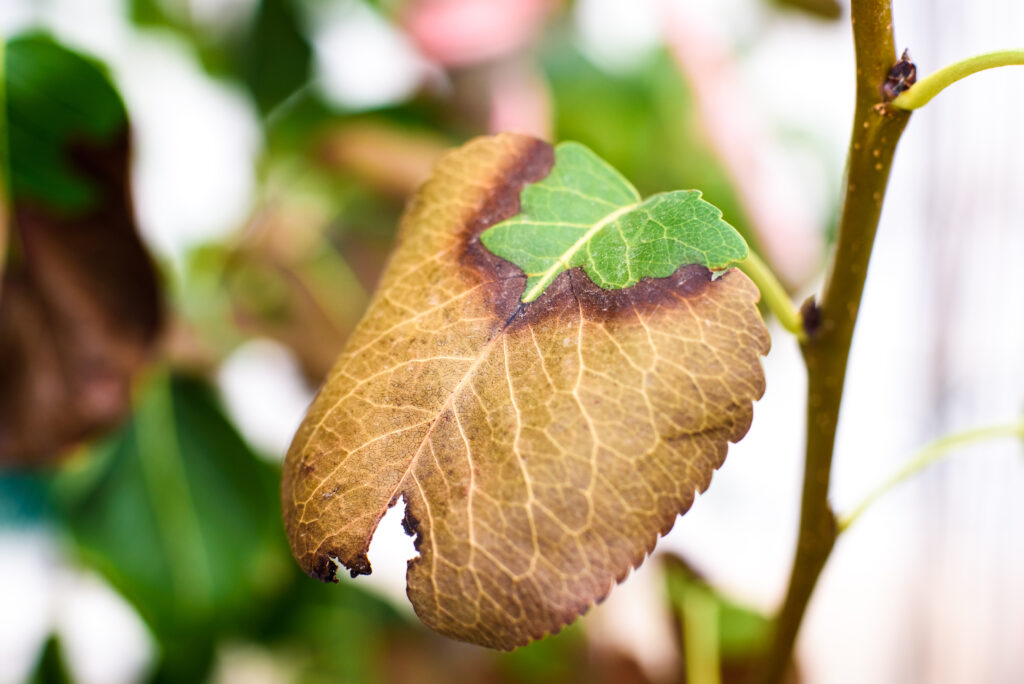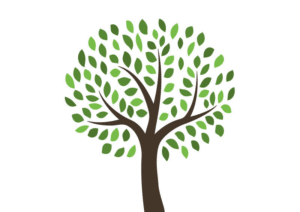
How to Identify and Treat Tree Diseases
It is a good idea to inspect your trees regularly for signs of disease, especially during times of active growth and when the weather is conducive to disease development, like springtime. It is often easiest to identify diseases during the spring and summer months when leaves and fruit are present. You can look for signs such as wilting, discoloration, or abnormal growth. You may also be able to identify the presence of pests; such as aphids or mites, that can lead to disease.
Symptoms of Tree Disease
Symptoms of tree diseases can vary widely depending on the specific disease, the tree species, and the severity of the infection. However; there are some common symptoms to look out for when identifying tree diseases:
- Leaf discoloration: changes in the color of leaves can indicate a range of diseases. Yellowing or browning of leaves can be a sign of nutrient deficiencies or fungal infections.
- Wilting or drooping leaves: trees that have wilted or drooping leaves, especially those that do not recover overnight or after a good watering, may be infected with a disease.
- Crown dieback: crown dieback is the gradual dying of the upper branches and leaves of a tree. This can be a sign of disease, environmental stress, or other issues.
- Cankers: Cankers are discolored, sunken areas on the bark of a tree that indicate an infection in the tree.
- Growth abnormalities: Any unusual growth patterns, such as distorted leaves, stunted growth, or abnormal swelling, can be a sign of a disease.
- Fungal growth: Fungal growth on the trunk or branches of a tree can be a sign of a fungal infection.
- Insect damage: Damage from insects such as borers or scales can indicate that the tree is weakened and more susceptible to disease.
If you can identify one or more symptoms of tree disease on your property, it’s best to call in an expert, certified arborist from Gray Brothers Tree Service.
Common Tree Diseases in Middle Georgia
Middle Georgia is home to a variety of tree species and each species can be susceptible to different types of diseases. The most common ones include
- Oak Wilt: a fungal disease that affects oak trees, causing the wilting and eventual death of the tree.
- Anthracnose: a fungal disease that affects hardwood trees, causing leaf spots and defoliation.
- Canker Diseases: Caused by fungi or bacteria, these diseases can affect a variety of trees, causing sunken or discolored areas on the bark, branch dieback, and other symptoms.
- Pine Wilt: A disease that affects pine trees, causing wilting and death of the tree.
- Diplodia Tip Blight: A fungal disease that affects pine trees, causing tip dieback and cankers on the branches.
- Apple Scab: A fungal disease that affects apple and crabapple trees, causing leaf spots and defoliation.
- Cedar Apple Rust: A fungal disease that affects apple and crabapple trees, causing orange spots on the leaves and fruit.
This isn’t a complete list of diseases your trees could suffer from. If you suspect that your trees are diseased, contact a professional arborist or tree care specialist like Gray Brothers Tree Service for a proper diagnosis and treatment plan.
Develop a Treatment Plan
If you’ve identified any of the symptoms of tree disease, it’s important to realize it could also be caused by other factors such as environmental stress, pests, or poor soil conditions. Proper diagnosis of the disease is critical for effective treatment. If you suspect that your tree may be diseased, it’s best to consult with a professional arborist at Gray Brothers Tree Service who can provide an accurate diagnosis and treatment plan.
Some common methods for treating tree diseases:
- Pruning: Removing the affected branches and leaves is often the first step in treating a diseased tree. This can help to limit the spread of the disease and encourage healthy growth.
- Fungicides: If a fungus is causing the disease, applying fungicides can help to control the infection. Fungicides work by inhibiting the growth and reproduction of fungi, and they can be applied as a spray or soil drench.
- Insecticides: If an insect is causing the disease, applying insecticides can help to control the pest and prevent further damage to the tree.
- Soil amendments: Nutrient deficiencies in the soil can cause or exacerbate tree diseases. Applying soil amendments such as fertilizers or compost can help to improve soil health and promote tree growth.
- Tree injection: For more severe infections or diseases that affect the interior of the tree, tree injection may be necessary. This involves injecting a treatment directly into the tree’s vascular system, which allows the treatment to circulate throughout the tree.
- Tree removal: If the disease is too severe and the tree cannot be saved, tree removal may be necessary to prevent the spread of the disease to nearby trees and guarantee your home and property’s safety.
Keep Your Trees Thriving with Gray Brothers Tree Service
If you’ve identified any symptoms of tree disease on your property, Gray Brothers Tree Service will come out and help identify the cause and the best treatment plan moving forward. Once the tree has been treated it’s important to continue to monitor the tree for signs of improvement of recurrence of the disease.
Working with a team of certified arborists from Gray Brothers Tree Service is the best way to keep your trees healthy and happy year-round. Preventative measures such as regular tree inspections, proper pruning, and maintaining good soil health can help to prevent tree diseases from occurring in the first place.


